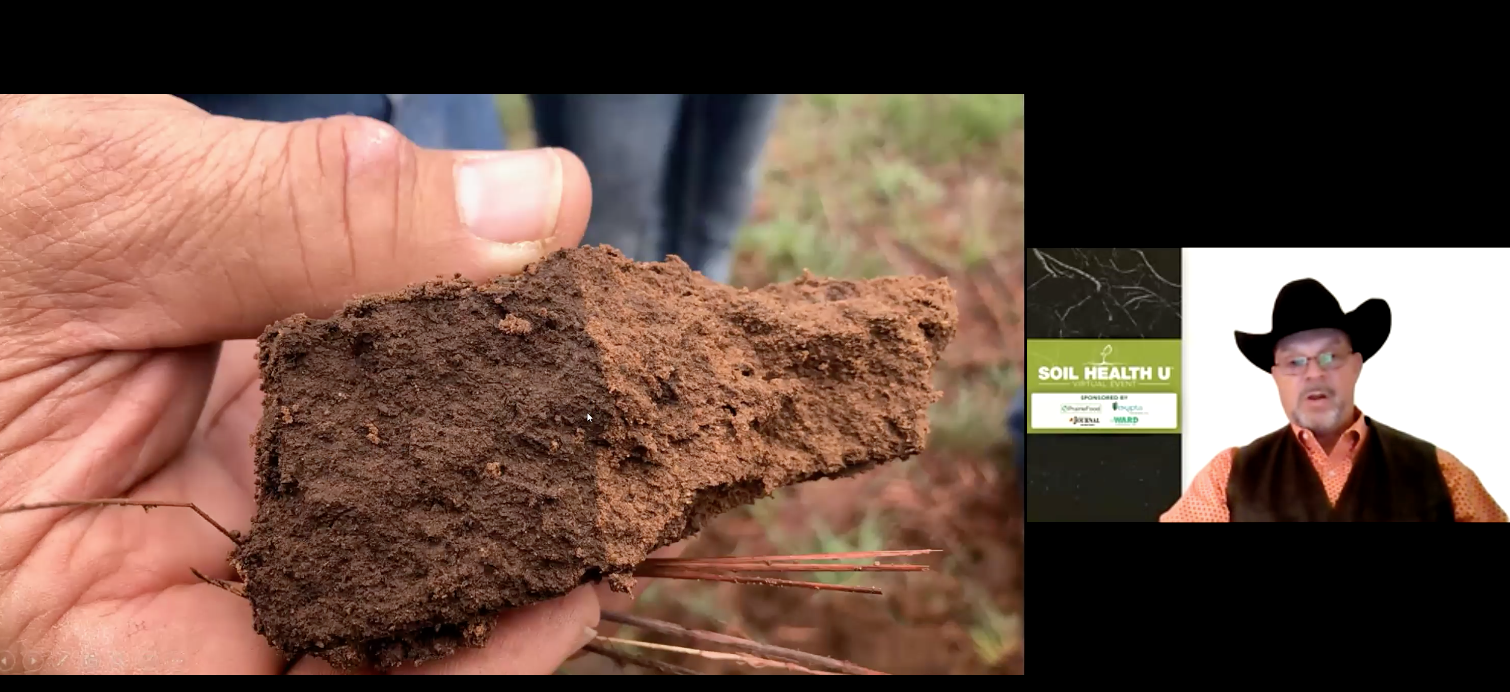Playing the long game results in reclassified soil

During his keynote presentation during High Plains Journal’s Soil Health U, Jan. 21, Jimmy Emmons shared how the Natural Resources Conservation Service wants to reclassify some of the soil on his farm near Leedey, Oklahoma.
The road to healthier soils is a long game, and Emmons has just scored a hole in one.
Oklahoma soils have a reputation for being red clay and compacted from generations of tillage, Emmons explained. He started applying principles of regenerative agriculture almost a decade ago in order to improve the functionality of his soils.
“The original soil survey mapped the soil as Ustifluvent,” Emmons said. Those are typically very young soils, and very light in color, said Steve Alspach, NRCS state soil scientist for Oklahoma. However, today, Alspach said the same soils are now darker in color, and would be called Mollic, and that’s why they are moving to reclassify the soil as fluventic haplustoll.
It’s very rich in carbon, and Alspach told Emmons that he might have raised organic matter in the field and added 30,000 to 35,000 pounds of carbon, while also reaching aggregate stability. The infiltration rates have risen and 8 to 10 inches of rain easily moves through the profile, too.
“You can see that there’s a line in the soil sample,” Emmons said. On one side is the typical Oklahoma clay, red and compacted. On the other side of the line, there’s about 10 inches of dark brown, carbon rich soil. Emmons said he estimates his practices lay down about one inch of darker carbon rich soil a year, and in three years he might reach the original plow pan of destruction in this field.
Oklahoma farmers like Emmons are seeing the benefits of the long game. According to the 2017 Census of Agriculture there was a 29% decrease in intensive tillage in Oklahoma. The state also saw a 24% increase in farms using cover crops and a 51% increase in acres planted with cover crops.
We can make a difference, Emmons said, but only if farmers stick to the long game.
Watch Emmons’ full presentation and the other keynote speeches that were recorded Jan. 21 by registering online at www.soilhealthu.net. And be sure to mark your calendars for Soil Health U 2022, which will be Jan. 19 and 20, 2022, in Salina, Kansas.
Jennifer M. Latzke can be reached at 620-227-1807 or [email protected].



